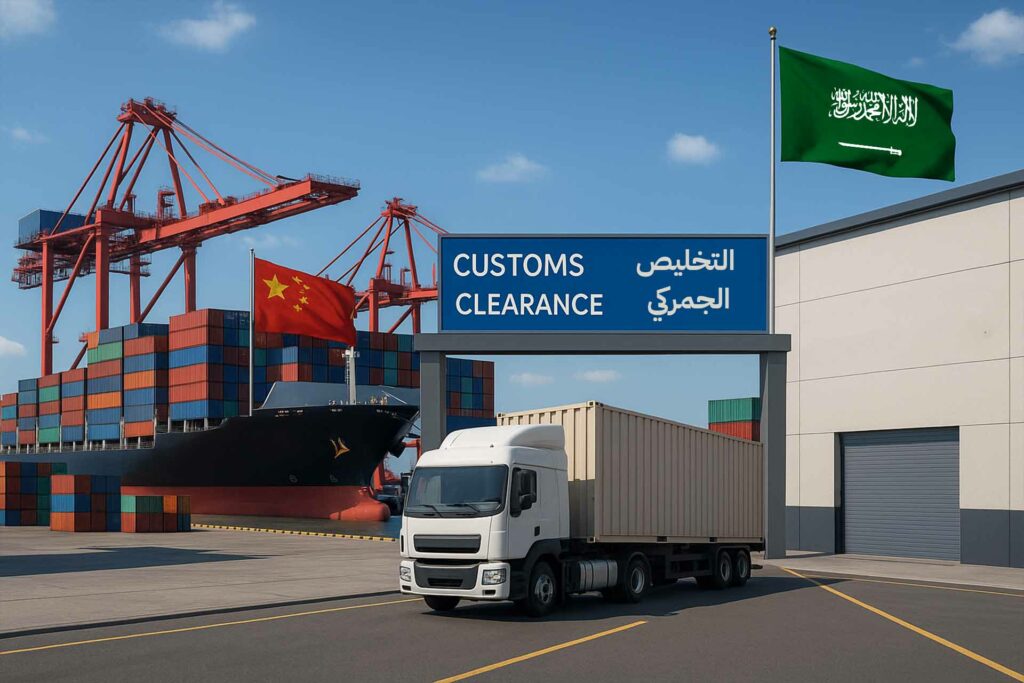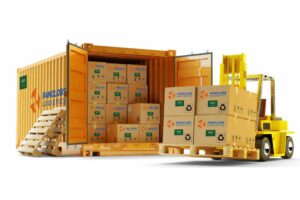Customs Clearance from China to Saudi Arabia in 2025: Everything You Need to Know
Navigating customs clearance between China and Saudi Arabia can be challenging, especially with constantly evolving regulations and requirements. In 2025, it’s more crucial than ever for importers to stay up to date with the latest Saudi customs laws to ensure smooth entry for goods arriving from the People’s Republic of China.
Key Customs Requirements for Importing from China to Saudi Arabia
To legally import goods into Saudi Arabia from China, importers must prepare the following core documents:
- Commercial Registration (CR):
The importer must hold a valid Saudi commercial registration that allows for import activity. - Certificate of Origin:
This document proves that the goods are manufactured in China. It is issued by the Chinese Chamber of Commerce or another authorized body in China. - Commercial Invoice:
A detailed invoice from the Chinese supplier, listing product names, quantities, unit prices, total value, and shipping terms. It must match the packing list exactly. - Packing List:
Provides a breakdown of each package, including dimensions, weights, and contents. - Bill of Lading (B/L):
A shipping document issued by the freight company, serving as a contract of carriage and proof of shipment. - Certificate of Conformity (CoC):
Required for most goods entering Saudi Arabia. The CoC verifies that imported products meet SASO (Saudi Standards, Metrology and Quality Organization) standards.
It is issued via the SABER platform and typically requires a factory-issued conformity report. - HS Code (Unified Customs Code):
A globally recognized customs classification number that defines the nature of the product. It must be correctly stated on the invoice as it determines applicable customs duties.
Step-by-Step Customs Clearance Process: China to Saudi Arabia
1. Shipment Arrival
Once the shipment arrives at a Saudi port or airport, the importer or their customs broker is notified.
2. Customs Declaration
The customs broker submits a declaration through the Fasah platform, attaching all required documents electronically.
3. Document Review
Saudi Customs carefully verifies all submitted documents for accuracy and completeness.
4. Duty & Tax Calculation
Duties are calculated based on the product’s HS Code and declared value.
Most goods are subject to a 15% VAT, while customs duties typically range from 0% to 15%, depending on the product type.
5. Physical Inspection (if needed)
Some shipments undergo physical inspection to verify their compliance with the customs declaration and Saudi specifications.
6. Payment of Fees
After approval, the importer pays all applicable customs duties and taxes through the Fasah system.
7. Goods Release
Upon completion of all formalities and payments, the shipment is cleared and handed over to the importer.
Expert Tips to Simplify Customs Clearance from China to Saudi Arabia
- Work with a Trusted Customs Broker:
Partnering with an experienced customs broker who specializes in China–Saudi trade can save you time, reduce risks, and handle complex documentation on your behalf. - Ensure Supplier Compliance:
Your Chinese supplier must be fully aware of Saudi import requirements and able to provide all necessary paperwork, including SABER registration and product conformity documentation. - Use the SABER Platform Early:
Register your products on SABER before the shipment leaves China. This avoids unnecessary customs delays due to missing conformity certificates.
For more guidance on customs clearance between China and Saudi Arabia, you can reach out to Pan Globe Logistics directly at +966503708666. Our expert team is always ready to help with real-time support, documentation review, and end-to-end logistics solutions.





